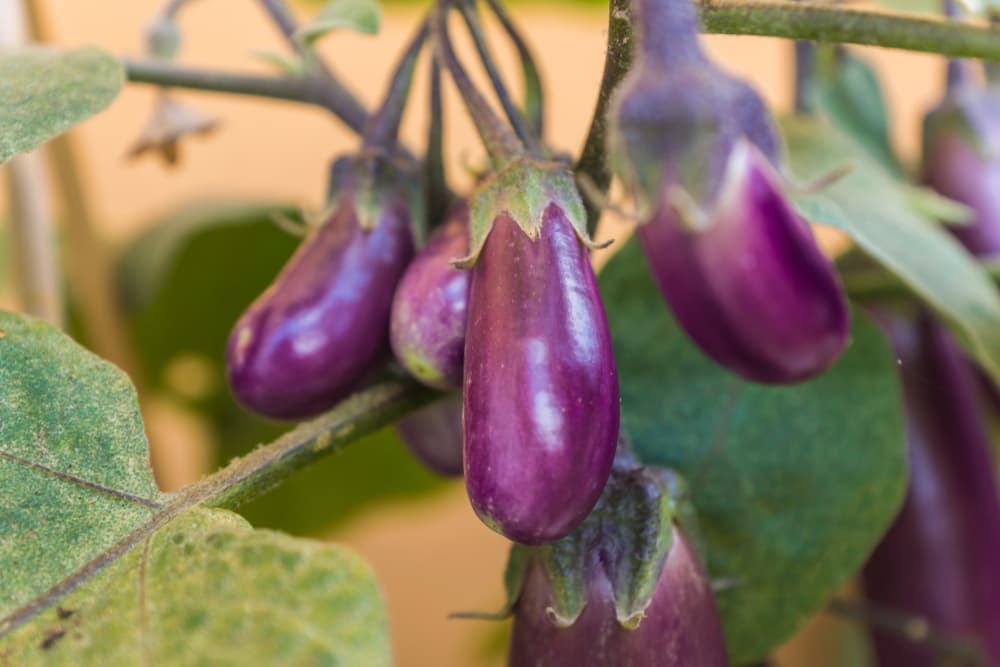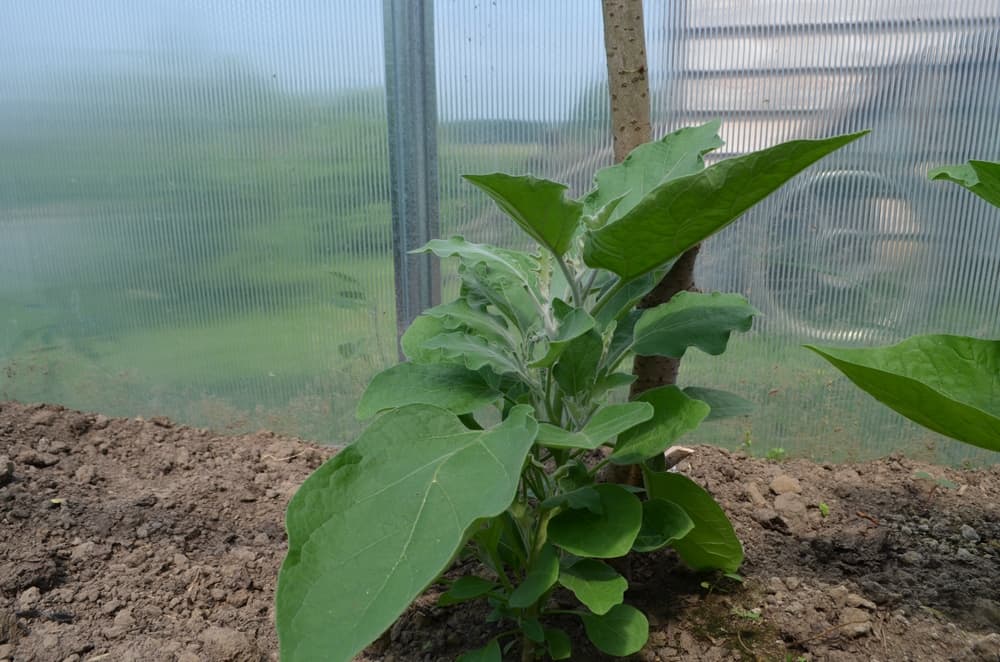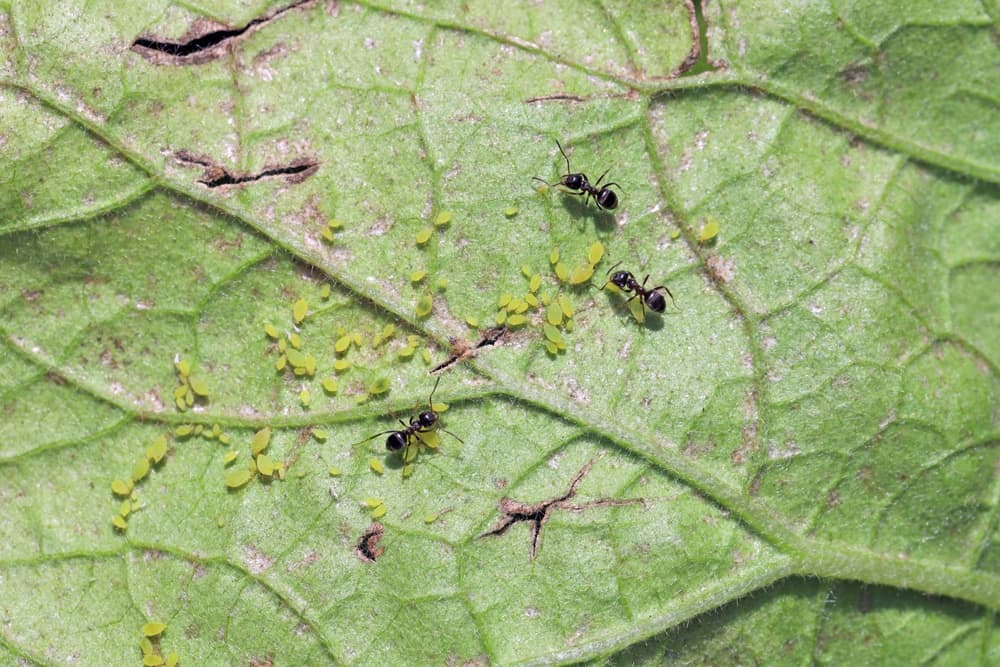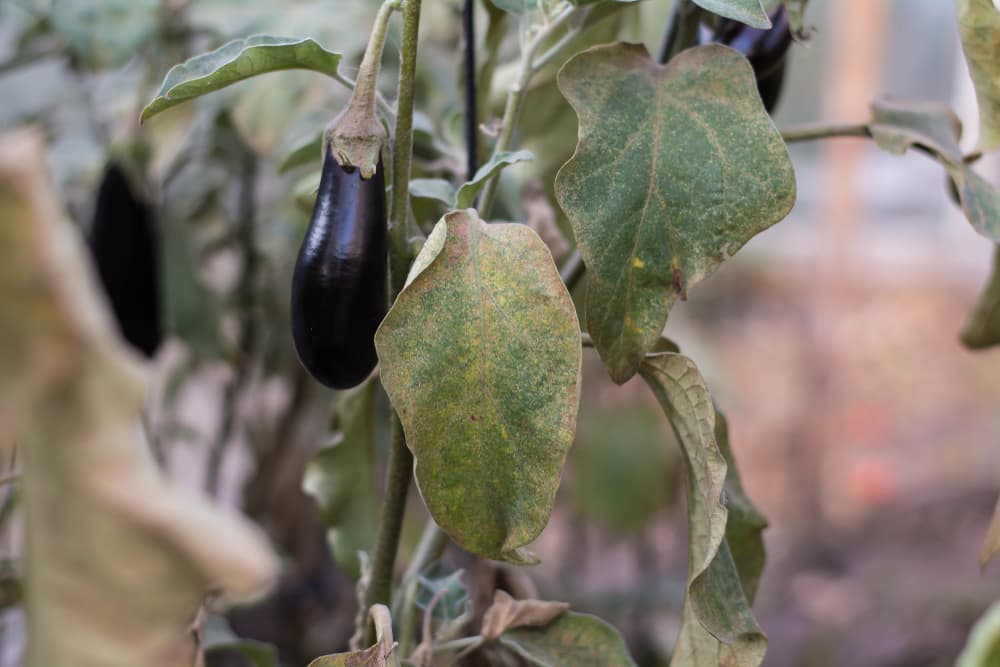The Ultimate Aubergine Growing Guide: Secrets To A Bountiful Harvest

FRUIT > AUBERGINE

Ed is a horticultural therapist, professional gardener and writer. Ed has a BSc in Occupational Therapy from Coventry University and a Diploma in Social and Therapeutic Horticulture (DipSTH) via Thive, the RHS and Pershore College. Ed runs a community kitchen garden in West Sussex, where he leads horticultural therapy sessions.
Reviewed By ROY NICOL

Roy is a Professional Gardener and Horticultural Consultant, specialising in large garden year-round maintenance and garden development. He is an RHS Master of Horticulture and uses his research in the application of no-dig methods in ornamental garden settings. Roy has been a Professional Gardener for more than six years and is a member of the Chartered Institute of Horticulture, Professional Gardener's Guild and Association of Professional Landscapers (Professional Gardener).
Contributions From EMILY CUPIT

Emily is a Gardening Writer, Photographer and Videographer from Derbyshire, UK. She is the Founder of Emily's Green Diary - a community of more than 75,000 people who share in her gardening journey.
IN THIS GUIDE
Aubergines are a delicious fruit – but are not widely grown here in the UK – which is a shame, as they are quite simple to grow, tasty to eat and can be cooked in all manner of ways.
Often thought of and used as a vegetable, aubergines are actually a fruit (although botanically classified as a berry).
Even though not especially difficult to grow, aubergines do have specific requirements in order to mature and produce a good-sized harvest, before autumn arrives.
Overview
| Botanical Name | Solanum melongena |
| Common Name(s) | Aubergine, Eggplant |
| Plant Type | Fruit |
| Native Area | Cultivated |
| Hardiness Rating | H1B-H1C |
| Foliage | Green lobed leaves which are coarse |
| Flowers | White to purple flowers |
| When To Sow Indoors | February, March, April |
| Plant Out | May, June |
| Harvesting Months | August, September, October |
Sunlight
Preferred
Full Sun
Exposure
Usually Undercover
Size
Height
1 – 1.5M
Spread
0.5 – 1M
Bloom Time
June – August
Soil
Preferred
Loam, sand
Moisture
Moist but well drained
pH
Any
Aubergines, or ‘Solanum melongena‘ as they are botanically named, are also widely known as ‘Eggplant’.
From the Solanaceae, or ‘Nightshade’ family, this genera also includes the widely-known (and grown) tomatoes, peppers and potatoes.1Tracing the evolution of the aubergine. (n.d.). Natural History Museum. Retrieved March 10, 2023, from https://www.nhm.ac.uk/discover/news/2018/august/tracing-the-evolution-of-the-aubergine.html
It is thought that aubergines originate from Southern China and South-East Asia – hence their need for a warm and sunny environment to grow best.2Aubergine. (n.d.). Kew Royal Botanic Gardens. Retrieved March 10, 2023, from https://www.kew.org/plants/aubergine
Aubergines are grown throughout the world and are one of the most important commercially grown crops in Asia.

Aubergines are often grown as a perennial plant in warmer climates, however here in the UK they are grown as an annual, with a long growing season and are most common as the oval purple fruit we all know it as.
They are nonetheless, also available to buy from seed in all manner of different shapes and colours, from long or curly to white or striped fruits.
Aubergine Varieties

Varieties available as seed in the UK include:
- ‘Bonica’ AGM with a deep black glossy fruit.
- ‘Garline’ AGM with smaller purple fruit and perfect for containers.
- ‘Clara’ AGM which produces heavy crops of white fruits.
All these varieties have been given the Award of Garden Merit (AGM) by the Royal Horticultural Society (RHS) meaning they are especially suited to growing in the UK’s climatic conditions.
How To Grow Aubergines
Aubergines grow best in a rich and fertile soil which is moisture retentive; they will need the longest growing season we can give them in the UK.
Requiring warm and sunny conditions, they are happiest in a greenhouse or conservatory, although can be moved outside to a south-facing position in the height of the summer.
Growing From Seed
In order to give them time to grow and finally fruit at the end of the summer, aubergines are typically started off from seed as early as January.
See our full guide to growing from seed here.
Once the seedlings have produced their first set of true leaves, they can be carefully potted on.
Potting On
Make sure to hold them by their leaves and not the stem and pot on individually using peat-free multi-purpose compost.
Unlike tomatoes, aubergines do not like to be planted deeply as they will rot.
Grow on and repot as necessary until the weather allows them to be moved to their final position.

However, aubergine plants must not be moved to an unheated greenhouse until all risk of frost has passed, usually in May or June depending on what part of the UK you are in.
Planting Out
If a greenhouse is not an option, then aubergines can be planted and grown directly into the ground, but only in the warmest parts of the country.
If planting outside, make sure their final position is the sunniest and warmest you can provide, that any risk of frost has definitely passed and that the soil has warmed up – cloches can assist with this.
As the plants grow, keep watering and when the plants are 30cm tall the tip of the main stem can be pinched out to promote a bushy habit.

Once the first fruits start to appear, feed every fortnight with a high-potassium fertiliser, such as tomato feed.
For most varieties allow 5-6 fruits to develop before removing any further flowers, unless you are growing a smaller fruiting variety which can be allowed to develop more.
Staking and tying in may be required, especially for taller varieties and as the fruits develop.
Where To Grow Aubergines
Aubergines require a sunny, warm and ideally humid environment, which is why they do so well in a greenhouse here in the UK.
Their final growing position can either be directly in the ground, in containers or even grow bags – but if outside, a south or west-facing spot is necessary.
If planting outside and having already been hardened off, the plants can be spaced 60–90cm apart to allow room to grow and good air circulation.

If growing in pots then a final pot size of 25–30cm will be sufficient, or if using grow bags, 3 plants per standard size bag is usually the maximum.
Harvesting
Aubergines take around 6 months from germination until the fruits are ready to harvest, usually from August onwards.
They are ready to harvest once they have reached their final colour and are covered with a glossy skin.
Harvest each fruit by cutting the stem as soon as they are ready – if left too long their taste decreases rapidly and may become bitter.
Aubergines can be stored in the fridge for a few days, but taste so much better if eaten straight after picking.
Common Problems
Aphids
‘Greenfly’ or aphids can be particularly attracted to aubergine plants, leading to poor growth and harvests.
They will often leave behind a sticky honeydew substance on the plant and will usually be accompanied by ants – they are typically large enough to be spotted with the naked eye.

Control measures can include squishing by hand where numbers are small and encouraging predators such as ladybirds and hoverflies – but for more significant numbers, organic and insecticidal sprays can be considered.
Red Spider Mite
Red spider mites are most common in warm and dry conditions such as greenhouses and can prove difficult to control.
Preying on a number of plants, including aubergines, they suck the sap – leading to mottling of the leaves, leaf drop and even eventual demise of the plant.
The mites are not always red as their name would suggest, but green or yellow – and sometimes become red in the autumn.
The mites are incredibly small and are not easily seen by the naked eye.

On close inspection, they can most often be found on the underside of the leaves, along with their eggs.
If possible, any plants infested with red spider mite should be removed from others nearby as quickly as possible and destroyed.
The mites prefer a dry environment and so increasing humidity by misting or dampening down the greenhouse is a preventative action, but will sadly not control them once present.
Once red spider mite is established controls can include biological and pesticide solutions, with biological approaches now being the preferred option.
“Red spider mite can also be controlled by removing plants from the greenhouse, spraying thoroughly with a hose set to a fine spray to remove the bulk of mites and eggs, and after allowing to dry, spraying with an organic pesticide such as pyrethrum or plant oils for any remaining mites,” shares Master Horticulturist Roy Nicol.
Blossom End Rot
Blossom end rot is caused by certain growing conditions that can affect aubergines – but more commonly tomatoes and peppers.
Caused by a lack of calcium, dark patches appear at the end of the fruits varying in size from a small blotch to a rather worrying inch or more.
Compost, grow bags and soil more often than not have more than enough calcium for plants to grow.
However, it is the plant struggling to transport the calcium to the far ends of the fruit that leads to blossom end rot, most often caused by erratic or under watering and high temperatures.
The best method of control in the case of blossom end rot is prevention, as sprays are ineffective.
The soil should always be kept moist and not allowed to dry out, which may mean watering twice daily in a hot greenhouse during the height of summer.
Feeding fortnightly may help prevent it, along with mulching the soil to help conserve moisture.
Depending when it strikes, already-ripened fruit can still be eaten with the affected area cut out.
However, if blossom end rot appears on unripe fruit the fruit is unlikely to ripen any further.
References
- 1Tracing the evolution of the aubergine. (n.d.). Natural History Museum. Retrieved March 10, 2023, from https://www.nhm.ac.uk/discover/news/2018/august/tracing-the-evolution-of-the-aubergine.html
- 2Aubergine. (n.d.). Kew Royal Botanic Gardens. Retrieved March 10, 2023, from https://www.kew.org/plants/aubergine
